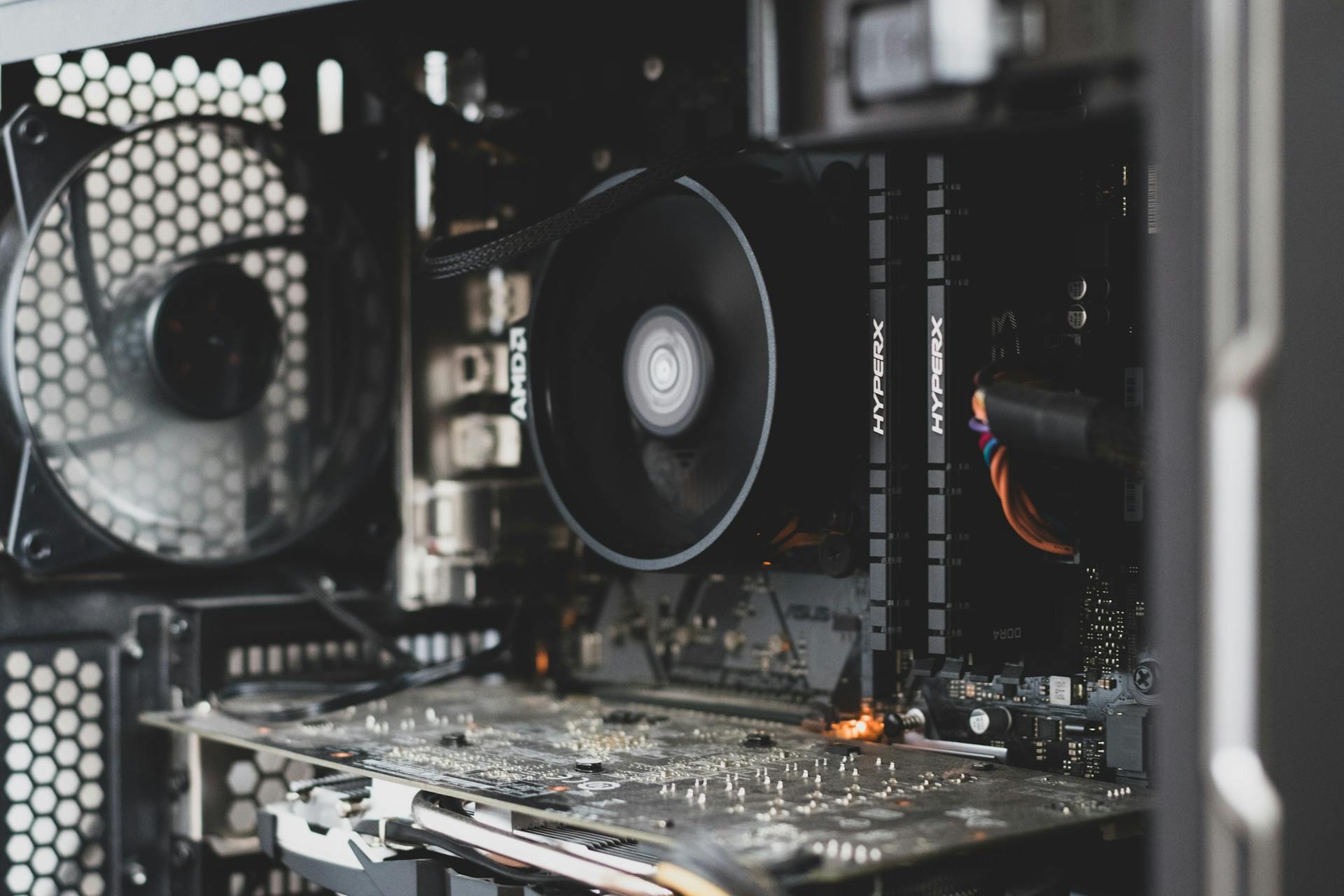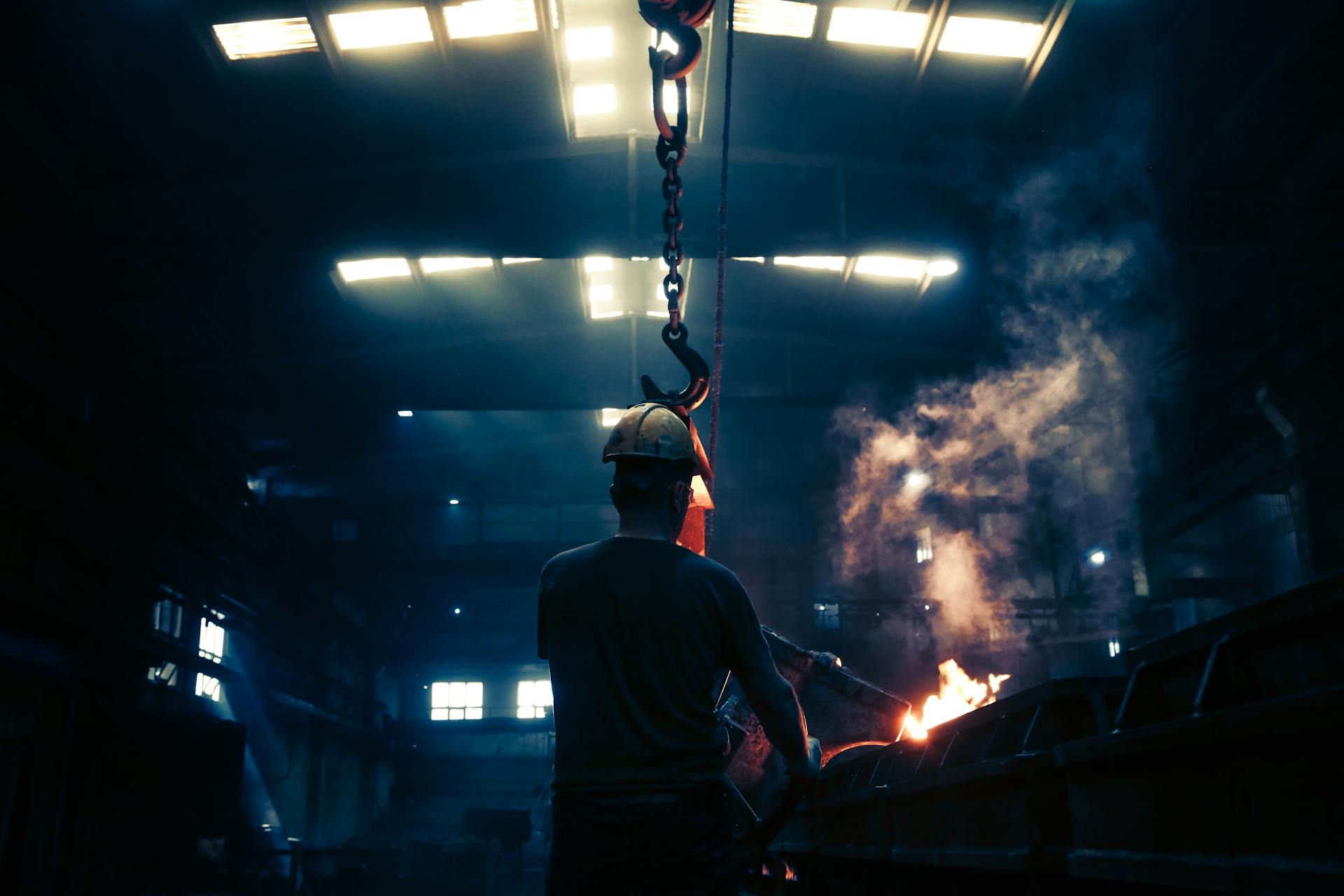
Depreciation expense is a crucial aspect of accounting that helps businesses accurately reflect the value of their assets over time. It's a non-cash expense that reduces the value of an asset on the balance sheet.
To calculate depreciation expense, businesses use a method such as straight-line or units-of-production. This method helps to allocate the cost of an asset over its useful life.
The straight-line method assumes that an asset's value decreases evenly over its useful life. For example, if a company buys a machine for $10,000 that is expected to last for 5 years, the annual depreciation expense would be $2,000.
Depreciation expense is recorded on the income statement as a non-cash expense, which means it doesn't involve any actual cash outflow.
Related reading: Depreciation Expense Straight Line Method
Understanding Depreciation
Depreciation is a fundamental concept in accounting that allows businesses to allocate the cost of fixed assets over their useful lives. The depreciation expense formula calculates the portion of a fixed asset's cost that gets allocated as an expense during each year of its useful life, using the formula: Annual Depreciation Expense = (Asset Cost - Salvage Value) / Useful Life.
For another approach, see: Depreciation Expense Formula for Non Profit Organization
To qualify for depreciation, an asset must meet specific criteria, including long-term use, declining value, ownership, and use for business purposes. Land and natural resources do not qualify for depreciation, nor do inventory, financial assets like stocks and bonds.
The useful life of an asset is a crucial input in determining depreciation expense. It's estimated based on how long the asset is expected to remain in service. The salvage value is the estimated resale value at the end of its life.
Depreciable assets include property, plant, and equipment (PP&E), intangible assets like patents, copyrights, trademarks, and software, but not land and natural resources. Common examples of depreciable assets include buildings, machinery, equipment, furniture, fixtures, and vehicles used in business operations.
Here are the key characteristics of depreciation expense:
- Non-cash expense: Reported on the income statement but doesn’t involve immediate cash outflow
- Systematic allocation: Cost of the asset is systematically allocated over its useful life
- Affects multiple financial statements: Impacts both the income statement and balance sheet
Understanding depreciation is essential for accurate financial reporting and optimal tax strategy. It allows businesses to allocate the cost of fixed assets over their useful lives, reducing the book value of fixed assets on the balance sheet over time.
Worth a look: The One Fixed Asset That Is Not Depreciated Is
Importance and Benefits

Depreciation expense is crucial for an accurate picture of a business's financial position and performance. Accurately calculating depreciation is necessary for GAAP compliance and impacts the balance sheet by reducing the book value of assets over time.
Depreciation affects the income statement as a non-cash expense, making it essential for financial reporting. Businesses can take tax deductions for depreciation to reduce taxable income, which is why accurately calculating depreciation is crucial.
Using the Modified Accelerated Cost Recovery System (MACRS) can generate larger deductions compared to the straight-line method, reducing taxable income in early years. However, it results in lower deductions later on.
Here are the key benefits of recognizing and properly accounting for depreciation expense:
- Accurate financial reporting
- Tax benefits
- Informed decision-making
- Better budgeting and forecasting
The Importance of
Accurately calculating depreciation is crucial for a realistic picture of your company's financial performance and position. It impacts the balance sheet by reducing the book value of assets over time.
Depreciation affects the income statement as a non-cash expense. This is necessary for GAAP compliance.
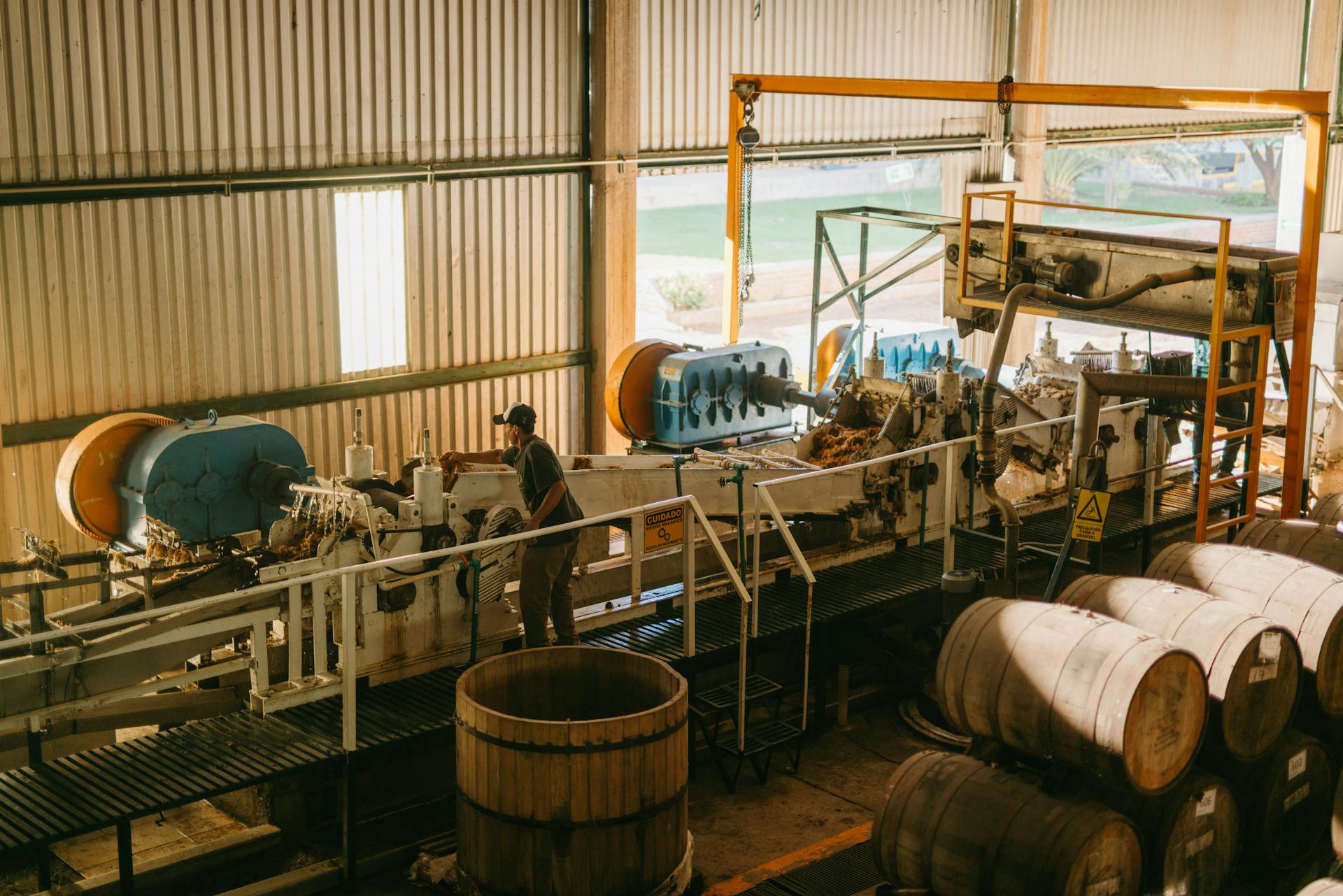
Businesses can take tax deductions for depreciation to reduce taxable income. This is done by using methods like MACRS, which have specific IRS guidelines to follow.
Estimating the useful life and residual value of assets requires management judgment and can impact future cash flow projections.
Here are the key reasons why recognizing and properly accounting for depreciation expense is crucial:
- Accurate financial reporting: Provides a more realistic picture of your company’s financial performance and position
- Tax benefits: Can be deducted as a business expense, potentially reducing taxable income
- Informed decision-making: Aids in making better investment and replacement decisions
- Budgeting and forecasting: Leads to more accurate financial projections and planning
Maximizing Benefits with MACRS
Using the Modified Accelerated Cost Recovery System (MACRS) can generate larger tax deductions compared to the straight-line method, reducing taxable income in early years. This is because depreciation deductions are highest in year 1 and gradually decrease each year.
Assets are categorized into property classes with set recovery periods, such as office equipment falling under the 5-year property class. This means you can expect higher depreciation expenses in the early years of an asset's useful life.
The double declining balance method is used for most property classes, which results in higher depreciation deductions in the early years. This method allows businesses to deduct a larger portion of the asset's cost in the first few years.
Additional reading: Percentage-of-completion Method
At the end of the recovery period, the asset's tax basis is reduced to its estimated salvage value. This is a key feature of MACRS depreciation that businesses should be aware of when planning their tax strategy.
By leveraging the accelerated tax savings offered by MACRS, businesses can reduce their taxable income and lower their tax payments. This can be especially beneficial for businesses with a high cash flow timeline.
Here's a summary of the key features of MACRS depreciation:
- Assets are categorized into property classes with set recovery periods.
- Each property class uses a predefined depreciation method and rate.
- Depreciation deductions are highest in year 1 and gradually decrease each year.
- At the end of the recovery period, the asset's tax basis is reduced to its estimated salvage value.
Recording and Reporting
Recording depreciation expense in accounting involves making a debit to depreciation expense on the income statement and a credit to accumulated depreciation on the balance sheet. This process increases expenses and reduces net income for the period.
Depreciation expense represents the reduction in value of fixed assets like property, plant, and equipment over their useful life. It's a non-cash expense that reduces net income.
To record depreciation, you debit depreciation expense on the income statement, typically listed under "Selling, General, and Administrative Expenses" or as a separate line item. This increases expenses and reduces net income for the period.
For your interest: Cash Net Realizable Value
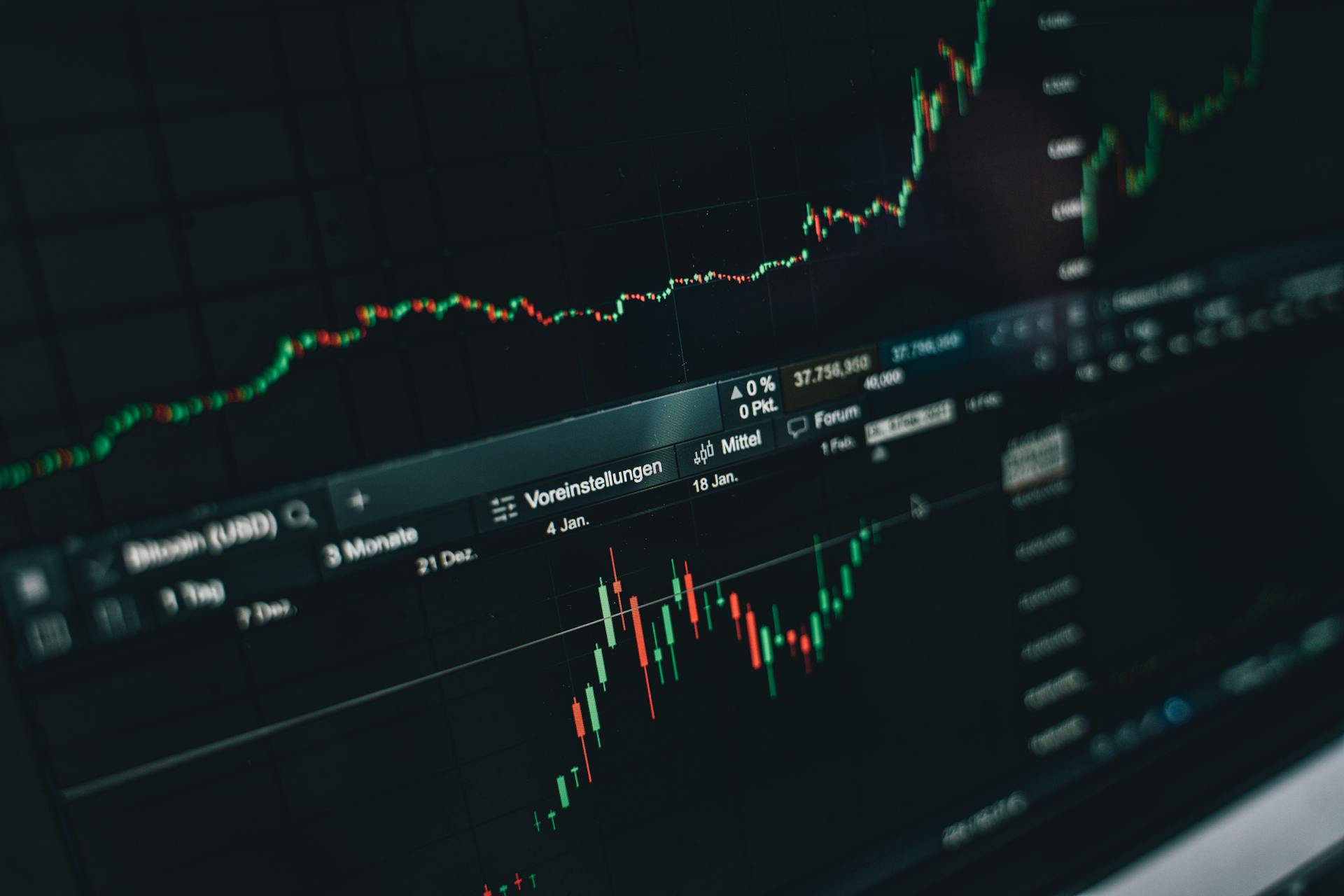
You also make a credit entry to the contra asset account called accumulated depreciation on the balance sheet. This account tracks the total depreciation taken over time on a fixed asset.
As you take more depreciation expense each year, the balance in accumulated depreciation increases. This reduces the net book value of the fixed asset on the balance sheet.
Here's a summary of the journal entries for recording depreciation:
- Depreciation Expense: debit
- Accumulated Depreciation: credit
The straight-line method provides steady depreciation expenses, which can lead to more consistent reported earnings over time. Accelerated methods like declining balance or sum-of-the-years’ digits can lower reported earnings in early years, which may be preferable for a more conservative financial presentation.
Depreciation expense is a non-cash operating expense that reduces net income. By allocating a portion of the asset's cost as depreciation each year, net income is lower than it would be if the full cost was expensed upfront.
Intriguing read: Accumulated Depreciation Is Reported on the
Types and Characteristics
Depreciation expense is a non-cash expense that involves systematically allocating the cost of an asset over its useful life. This approach is taken because the asset's value decreases over time due to wear and tear, obsolescence, or other factors.
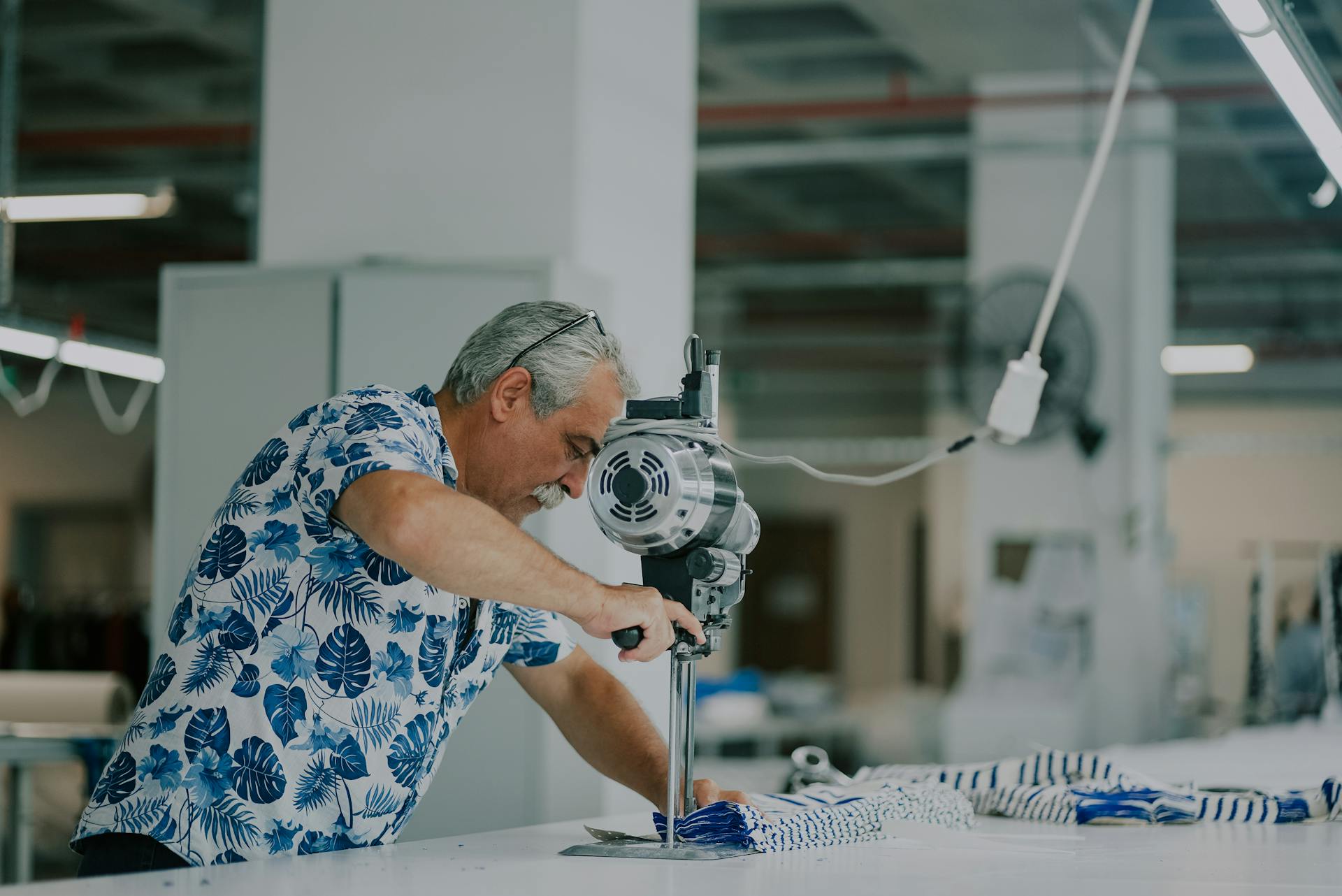
To qualify for depreciation, an asset must meet specific criteria, including having a useful life extending beyond a single accounting period, typically more than one year, and being used for business purposes to generate revenue.
Different assets may be better suited to specific depreciation methods, such as the straight-line method for assets that depreciate steadily over time, like buildings or furniture. For assets that lose value quickly in the early years, like computers or vehicles, the declining balance method might be more suitable.
Depreciable vs. Non-Depreciable
To qualify for depreciation, an asset must meet specific criteria, including being used for business purposes and having a useful life extending beyond a single accounting period.
Long-term use is a key characteristic of assets that can be depreciated. The asset must have a useful life of more than one year to qualify.
Assets that can be depreciated include tangible assets like property, plant, and equipment (PP&E), as well as intangible assets like patents, copyrights, and trademarks.
You might enjoy: Do You Subtract Accumulated Depreciation from Assets
To determine if an asset is depreciable, consider the following: is it used for business purposes, does it have a useful life of more than one year, and is it owned by the business or has the right to use it as if owned?
Here are some examples of non-depreciable assets:
- Land
- Natural resources
- Inventory
- Financial assets
These types of assets are either non-tangible, held for investment, or not expected to decline in value, and therefore cannot have depreciation expense applied to them.
A key factor in determining the depreciability of an asset is its useful life. The useful life of an asset is the estimated period during which it’s expected to be productive and generate economic benefits for your business.
Cost
Cost is a crucial aspect of understanding the value of an asset. The cost of an asset can be broken down into several key components, including the purchase price, delivery and installation fees, site preparation costs, and professional fees.
For another approach, see: Is Straight Line Depreciation a Fixed Cost
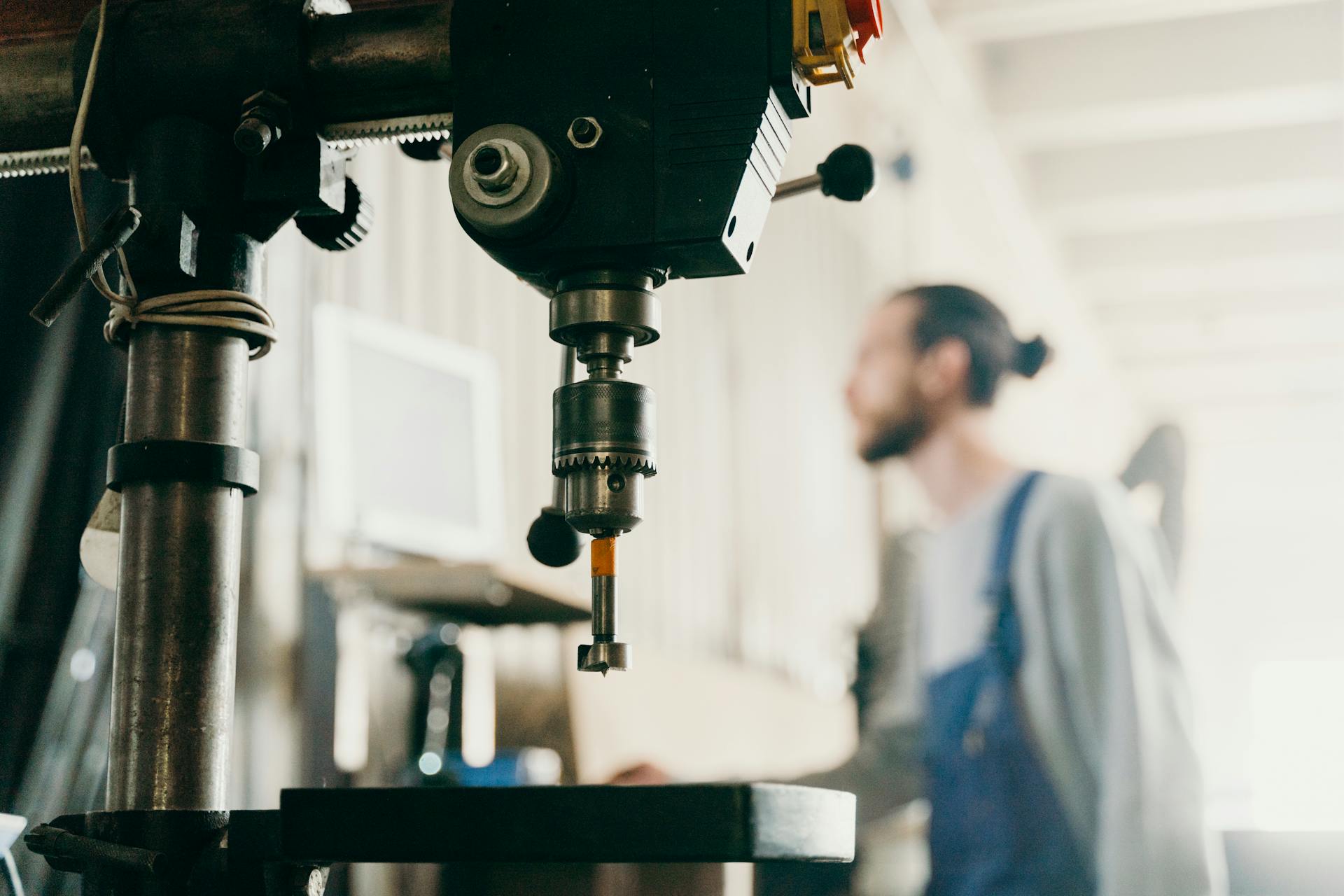
Having an accurate cost basis is critical for calculating depreciation, as it serves as the starting value that gets expensed over time. This is especially important for businesses that need to accurately track the value of their assets over their useful life.
The asset cost, also known as the initial cost or historical cost, is the foundation for calculating depreciation expense. It includes the purchase price of the asset, taxes and duties, installation costs, and any other direct costs incurred to bring the asset to working condition.
Here are the key components of the asset cost:
- Purchase price of the asset
- Taxes and duties
- Installation costs
- Any other direct costs incurred to bring the asset to working condition
For example, if you purchase a new delivery truck for $50,000 and spend $2,000 on registration and customization, the total asset cost would be $52,000.
Types and Characteristics
Depreciation is a crucial concept in accounting that helps businesses allocate the cost of assets over their useful life. It's a non-cash expense that doesn't involve immediate cash outflow.
You might like: Is Depreciation a Non Cash Expense

The straight-line method is the most common and straightforward way to calculate depreciation expense. This method involves taking the asset's original cost, subtracting its estimated salvage value at the end of its useful life, and dividing that number by the asset's useful life in years.
To calculate depreciation expense using the straight-line method, you'll need three key inputs: the original asset cost, salvage value, and useful life. For example, if a business purchases a piece of equipment for $15,000 and estimates it will have a salvage value of $500 at the end of its 10-year useful lifespan, the depreciation expense would be $1,450 per year.
Here are the key characteristics of depreciation expense:
- Non-cash expense: Reported on the income statement but doesn’t involve immediate cash outflow
- Systematic allocation: Cost of the asset is systematically allocated over its useful life
- Affects multiple financial statements: Impacts both the income statement and balance sheet
Accurate estimation of salvage value is crucial to ensure only the total depreciable cost gets expensed and not any expected residual value the business expects to realize. Factors to consider when estimating salvage value include the type of asset and potential resale value, scrap value if the asset cannot be resold, and removal and disposal costs.
Useful Life
The useful life of an asset is a critical factor in determining depreciation expense. It's the estimated period during which an asset is expected to be productive and generate economic benefits for your business.
Factors influencing an asset's useful life include expected wear and tear, technological advancements, and legal or contractual limits on the use of the asset. For example, you might estimate that your delivery truck will be useful for 8 years before needing replacement.
The IRS provides guidelines on appropriate useful lives for various asset classes, which can help determine realistic useful lives when calculating depreciation. The guidelines take into account factors such as asset type, manufacturer specifications, company replacement policies, and industry standards.
Here are some common factors to consider when estimating the useful life of an asset:
- Expected wear and tear
- Technological advancements
- Legal or contractual limits on the use of the asset
It's essential to select a useful life that is neither too long nor too short, as this can impact your depreciation expense. Aligning with industry standards and IRS guidelines can help you pick an appropriate useful life for your assets.
Units of Production
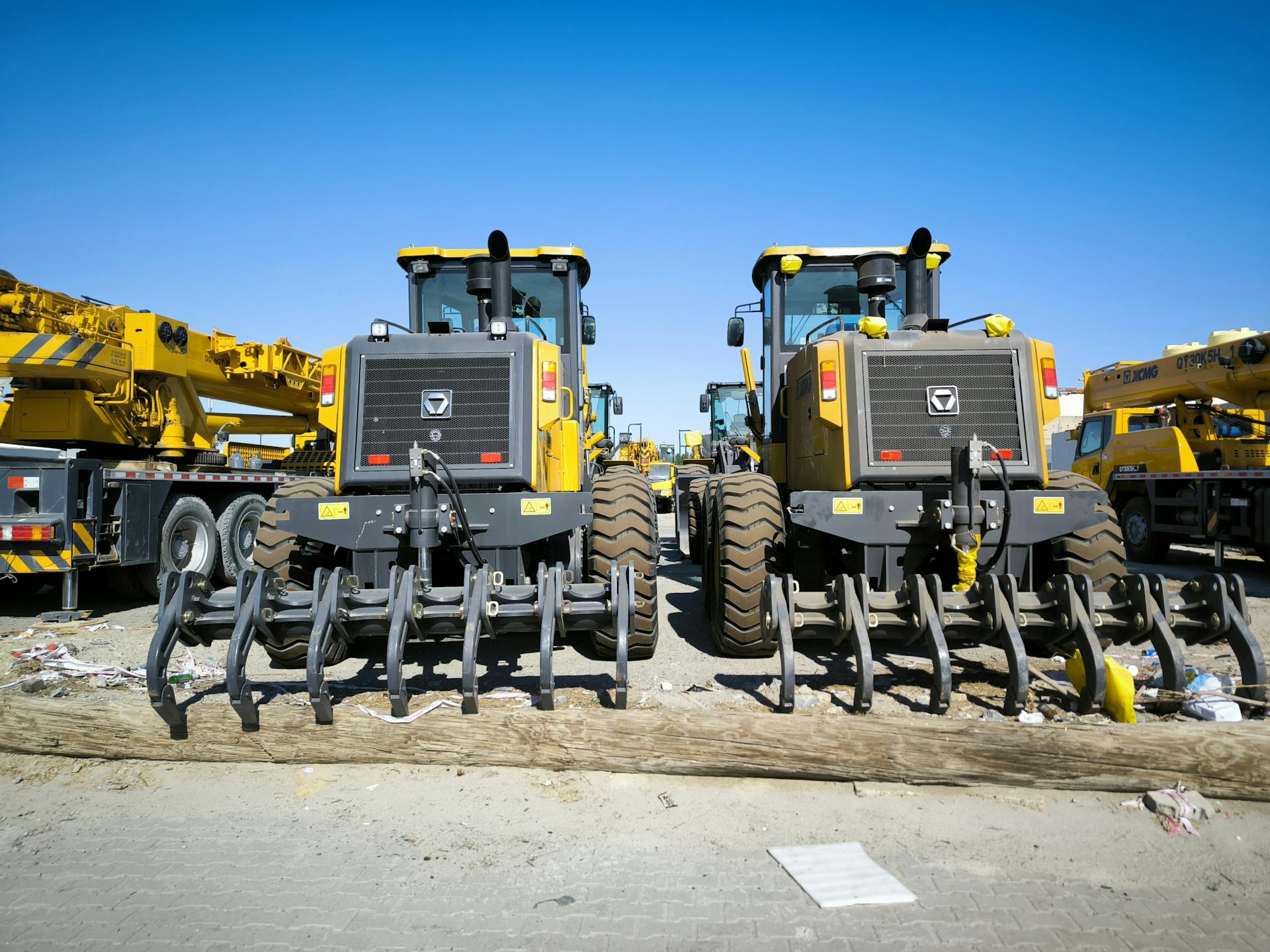
The Units of Production method is a great way to depreciate assets that vary in usage from year to year. This method directly links depreciation to asset usage, making it a perfect fit for assets with fluctuating production levels.
Assets like manufacturing equipment, which can produce thousands of units in a single year, benefit from this method. By calculating depreciation based on units produced, businesses can accurately reflect the wear and tear on the asset.
The Units of Production method requires estimating the total units of production the asset will provide over its useful life. This is a crucial step in calculating depreciation per unit, which is then multiplied by the actual units produced to determine the depreciation expense.
For example, a machine costing $50,000 with a salvage value of $5,000 is expected to produce 100,000 units over its lifetime. In the first year, it produced 15,000 units, resulting in a depreciation expense of $6,750.
The formula for calculating depreciation under the Units of Production method is: Depreciation = ((Purchase Price – Salvage Value) / Useful Life in Units) x Units Produced.
Sum of Years' Digits
The Sum of Years' Digits method is another accelerated depreciation method that allocates a higher depreciation expense in earlier years. This method is particularly suitable for assets that lose value quickly initially, such as computers or vehicles.
To calculate the Sum of Years' Digits, you use the formula: n(n+1) / 2, where n is the useful life in years. For example, if an asset has a 5-year useful life, the Sum of Years' Digits would be 15.
The Sum of Years' Digits method provides faster depreciation in early years, which can be beneficial for tax planning. It's also a suitable method for assets that depreciate faster in the beginning.
The formula for annual depreciation expense is: (Remaining Life / Sum of the Years' Digits) * (Asset Cost – Salvage Value). For instance, if an asset costs $20,000 with a salvage value of $2,000 and a useful life of 5 years, the Sum of the Years' Digits would be 15. The annual depreciation expense for the first year would be: (5/15) * ($20,000 – $2,000) = $6,000.
Here's a breakdown of the Sum of Years' Digits calculation for an asset with a 5-year useful life:
Choosing the Right Method

Choosing the right depreciation method is crucial for accurately calculating the value of your assets. The straight-line method is ideal for assets that depreciate steadily over time, such as buildings or furniture.
For assets that lose value quickly in the early years, like computers or vehicles, the declining balance method might be more suitable. This method accelerates depreciation, resulting in higher depreciation expense in the earlier years of an asset's life and less in later years.
The sum-of-the-years' digits method works best for assets whose usage varies significantly, such as manufacturing equipment. This method is calculated by adding up the years in the useful life and using that sum to calculate a percentage of the remaining life of the asset.
Assets that depreciate faster in the beginning may benefit from the sum-of-the-years' digits method, similar to the declining balance method. Consider the expected pattern of an asset's decline in value when selecting a method.

Here are some key factors to consider when choosing a depreciation method:
The units of production method works best for assets whose usage varies significantly, such as manufacturing equipment. This method calculates depreciation based on the actual usage of the asset, rather than its age.
Ultimately, the choice of depreciation method depends on the specific characteristics of your assets. By understanding the different methods and their applications, you can choose the one that best suits your business needs.
Manufacturing Equipment
Manufacturing equipment is a crucial asset for many businesses, and understanding its depreciation is essential for accurate financial reporting. The straight-line method is ideal for assets that depreciate steadily over time, but manufacturing equipment often loses value quickly in the early years, making the declining balance method or sum-of-the-years' digits method more suitable.
The declining balance method is a good choice for manufacturing equipment, as it allows for faster depreciation in the early years. This method is calculated by applying a fixed percentage to the asset's book value each year. For example, if a piece of manufacturing equipment costs $100,000 and has a useful life of 10 years, the annual depreciation expense using the double declining balance method would be $20,000 in the first year, $16,000 in the second year, and so on.
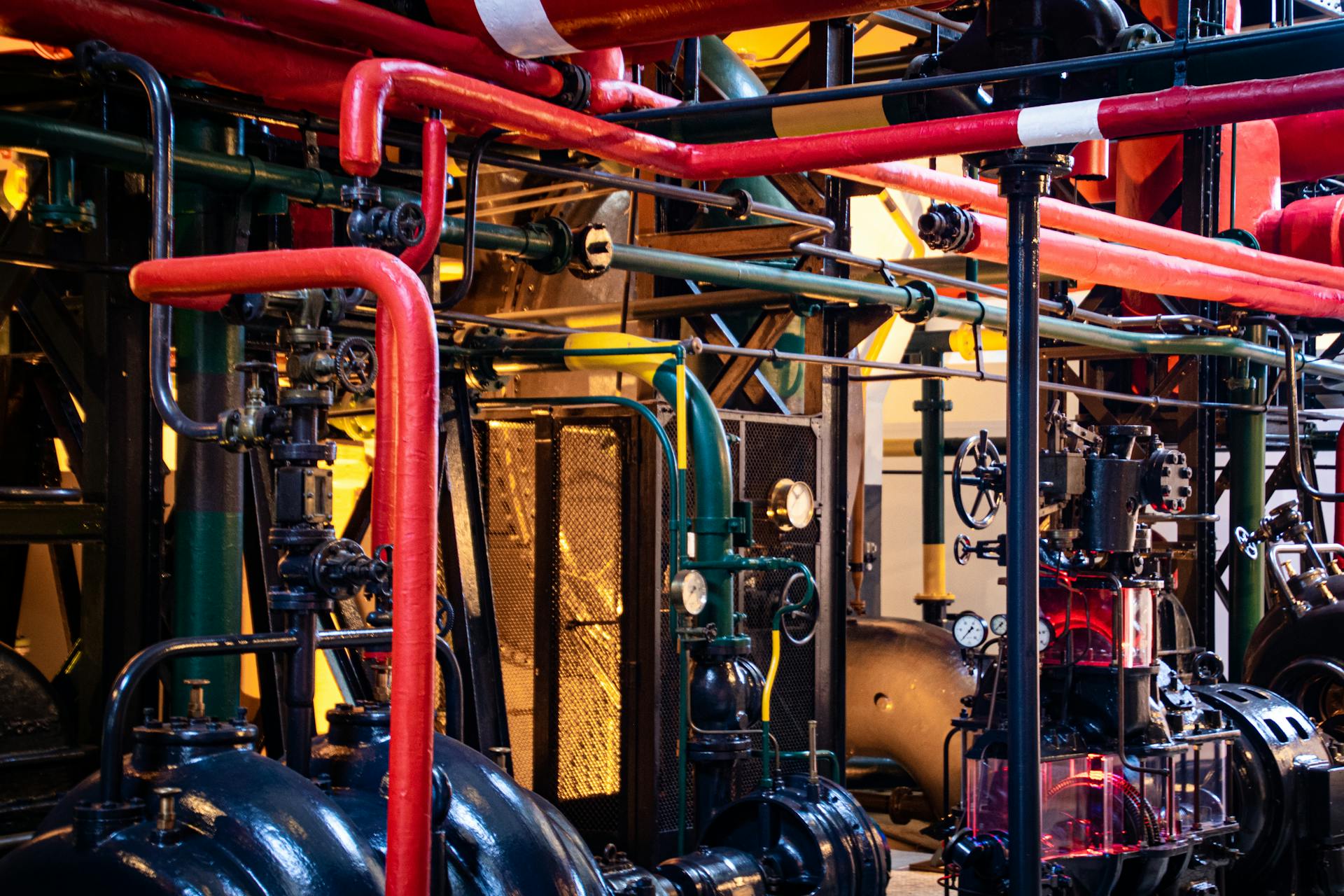
The sum-of-the-years' digits method is another accelerated depreciation method that can be beneficial for manufacturing equipment. This method calculates the depreciation fraction based on a declining fraction calculated from the asset's useful life. For instance, if a manufacturing equipment has a 10-year useful life, the sum of the years' digits would be 55 (10 + 9 + 8 + 7 + 6 + 5 + 4 + 3 + 2 + 1). The depreciation fraction would be calculated as the remaining life divided by the sum of the years' digits, multiplied by the asset's cost.
Here's a table summarizing the depreciation methods for manufacturing equipment:
Manufacturing equipment often requires regular maintenance and repairs, which can affect its useful life and salvage value. Businesses should consider these factors when estimating the salvage value of their manufacturing equipment.
Take a look at this: Depreciate Machinery
Frequently Asked Questions
Is depreciation an asset or an expense?
Depreciation is an expense, not an asset, as it represents the decrease in value of an asset over time. It's a deductible expense on a business's annual tax report.
What is an example of a depreciated cost?
Depreciated cost is the remaining value of an asset after its useful life, such as $5,000 for an inoperable crane sold for parts. This value is calculated by subtracting the depreciated cost from the asset's initial cost, which in this case is $50,000
Sources
Featured Images: pexels.com
